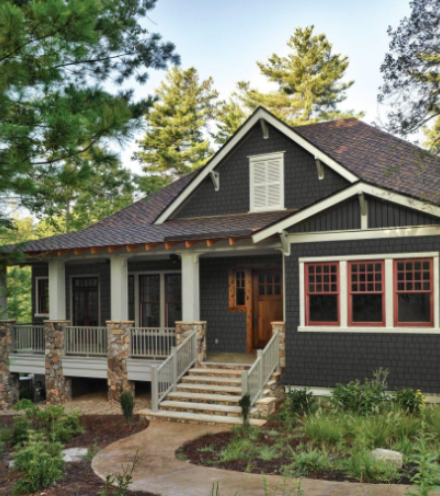As a homeowner, you're sitting on something special -- your property.
What you put into your home can come back, if the housing market continues to cooperate. Remodeling magazine's 2018 Cost vs. Value Report, now in its 31st annual edition, estimates an average 56 percent return for home renovations in 2018 -- dropping from 64 percent for the past two years.
How to finance your renovation using your house
Depending on how tight the housing market is in your area, and how tight your budget was when you bought your house, you may have set your eyes on a fixer-upper. Buying a house with potential gives you the chance to upgrade your property and likely increase the return on your investment. You may also be considering repair or renovation to upkeep the wear and tear on your house.
Both scenarios have one thing in common: You need cash to make them happen. Home renovation costs vary widely by state, with Home Advisor estimating smaller projects that start at $3,500 ranging up to $132,000 for more complicated remodels.
Fortunately, using the investment you've made in your home through your monthly mortgage payments, you can supplement your cash savings, or fund your renovation altogether, with one of these options:
- Cash-out refinance. Many loan officers suggest that homeowners check in to determine if they can benefit from a refinance if their mortgage rates are more than 1 percent higher than current market rates. A mortgage refinance can also be used to change loan terms, consolidate debt, or drop mortgage insurance. And it can provide extra cash to pay for home improvements.*
In a refinance, you'll exchange your old mortgage for a new one. Your loan officer may even explore creative strategies to help you meet your repair budget -- like combining your first home loan with a second home equity line of credit to provide additional cash. As a word of caution, it's only recommended to refinance when the savings outweigh the cost. Ideally, a mortgage refinance used for home upgrades should be used for the primary purpose of reallocating equity, giving access to the funds you need to further increase the value of your house.
- Home equity loan (HEL). A home equity loan differs from a refinance in that it doesn't involve an exchange in mortgages. When you get a home equity loan, your mortgage stays the same. Instead, you'll take out another loan as a lump sum of cash that you will repay over a set loan term with a fixed interest rate. The fixed interest rate on a home equity loan is generally higher than a fixed-rate mortgage. A home equity loan may be an ideal choice for smaller projects; when you need more cash, a cash-out refinance often makes more sense.
Here's an example: If you have $40,000 in home equity, you could take out a loan for that amount (or less). This loan could be used to pay for garage and entry door replacements, a new deck, or a new kitchen island -- all upgrades that had some of the highest ROI values ranked by Remodeling magazine for 2018. Your lender can guide you on how to use the equity you have available. It's important to note that the Consumer Financial Protection Bureau advises against borrowing against your house as an investment strategy, whether real estate investment or otherwise.
- Home equity line of credit (HELOC). Unlike a home equity loan, a home equity line of credit functions similarly to a credit card secured by your house. You'll get a revolving line of credit based on your home's available equity that you can use to fund upgrades, repairs, or a larger renovation project. Your lender may give you options about a home equity line of credit if you have a long-term renovation project that needs funding -- think a major kitchen overhaul or the addition of an extra room that could take several months to a year. Within the scope of the project, you'll get to charge on your HELOC as needed; most home equity lines of credit come with a variable interest rate set by the prime rate.
If you’re trying to decide between a home equity loan and a home equity line of credit, this might help: HELOCs are typically seen as more flexible than home equity loans because they can provide access to a steady stream of cash. With a HELOC, you won't have to pay interest on this cash until you've withdrawn it, though a home equity loan offers the stability of a fixed rate.
No matter which option you choose to fund your home repairs or renovations, don't forget to consider the potential tax break. Under the new tax plan enacted in 2018, home equity loan interest is no longer tax-deductible. Mortgage interest on a refinance is still tax-deductible on primary residences up to $750,000.
Bethany Ramos is the Creative Writer for Cornerstone Home Lending, Inc. Her work has also been featured on SheKnows.com, Time.com, Yahoo.com, Mamamia.com.au, Babble.com, and HuffingtonPost.com.
*While refinancing could make a significant difference in the amount you pay each month, there are other costs you should consider. Plus, your finance charges may be higher over the life of the loan.
For educational purposes only. Please contact your qualified professional for specific guidance.
Sources are deemed reliable but not guaranteed.




